Fighting Extinction: Is Cloning the Answer?
In a world where biodiversity is rapidly declining, the question of how to save endangered species has become increasingly pressing. With habitat loss, climate change, and poaching threatening countless animals, scientists and conservationists are exploring every possible avenue to combat extinction. One of the most controversial yet intriguing solutions on the table is cloning. But is cloning truly the answer, or just a high-tech band-aid on a much larger problem? This article delves into the potential of cloning as a conservation tool, examining its benefits, ethical implications, and the advancements in technology that make it possible.
Cloning is a fascinating process that involves creating a genetically identical copy of an organism. The most common technique used in animal cloning is somatic cell nuclear transfer (SCNT), where the nucleus of a somatic cell is transferred into an egg cell that has had its nucleus removed. This process essentially reprograms the egg to develop into a new organism. The biological principles behind cloning are complex, involving intricate cellular processes and genetic manipulation. While the science is groundbreaking, it also raises numerous questions about the implications of creating life in a lab. Can we truly replicate the essence of an organism, or are we merely playing God?
Despite the controversies, there have been notable success stories in the realm of cloning that hint at its potential in conservation. One of the most famous examples is the cloning of Dolly the sheep, the first mammal to be cloned from an adult somatic cell. Dolly's birth in 1996 was a watershed moment in biotechnology, showcasing the possibilities of cloning. Since then, scientists have attempted to clone various endangered species, such as the Przewalski's horse and the black-footed ferret, with varying degrees of success. These initiatives have provided valuable insights into the cloning process and have sparked conversations about its role in conservation efforts.
Dolly's cloning was not just a scientific breakthrough; it was a cultural phenomenon that sparked debates about the ethics of cloning. Her existence raised crucial questions about the implications of cloning for biodiversity and conservation. The success of Dolly's cloning has influenced conservation strategies, demonstrating that cloning could potentially restore populations of endangered species. However, it also highlighted the challenges that come with such endeavors, including the need for genetic diversity and the ethical considerations surrounding animal welfare.
As conservationists reflect on Dolly's legacy, it's clear that her story has shaped modern conservation strategies. Cloning could serve as a tool to restore biodiversity in threatened ecosystems by reintroducing genetically similar individuals to bolster dwindling populations. However, this approach is not without its challenges. Conservationists must balance the benefits of cloning with the need for sustainable habitat restoration and protection. After all, cloning cannot address the root causes of extinction, such as habitat loss and climate change.
The scientific and ethical lessons learned from Dolly's cloning experience are invaluable. For one, it emphasizes the importance of genetic diversity in any cloning project aimed at saving endangered species. Cloning a single individual may not be enough to ensure a healthy, viable population. Additionally, the ethical concerns surrounding cloning—such as animal welfare and the potential for unforeseen consequences—must be at the forefront of any cloning initiative. These lessons can guide future projects and help ensure that they are conducted responsibly and ethically.
As we explore the potential of cloning, we can't ignore the moral dilemmas it presents. Are we crossing an ethical line by manipulating the building blocks of life? The concept of playing God raises significant concerns, particularly regarding the welfare of cloned animals. Cloning does not guarantee the same quality of life as naturally conceived organisms, and the risks of genetic defects can be high. Scientists have a responsibility to address these ethical issues and ensure that any cloning efforts prioritize the well-being of the animals involved.
When comparing cloning to traditional conservation methods, it's essential to assess the effectiveness and sustainability of each approach. While cloning offers rapid population recovery and the potential to enhance genetic diversity, it cannot replace the need for natural habitat preservation. Traditional conservation methods, such as habitat restoration and anti-poaching efforts, remain crucial for long-term species survival. Cloning should be viewed as a complementary tool rather than a standalone solution.
Cloning has several potential advantages that could support conservation goals, including:
- Rapid Population Recovery: Cloning can quickly bolster populations of endangered species.
- Genetic Diversity Enhancement: Cloning can help introduce desirable genetic traits into small populations.
- Scientific Research: Cloning provides opportunities for research that can inform conservation strategies.
Despite its advantages, cloning also faces significant limitations, such as:
- Genetic Defects: Cloned animals often suffer from health issues and shorter lifespans.
- High Costs: The technology and resources required for cloning are expensive.
- Inability to Address Habitat Loss: Cloning cannot solve the fundamental issues of habitat destruction.
1. What is cloning?
Cloning is the process of creating a genetically identical copy of an organism. It involves techniques like somatic cell nuclear transfer.
2. Has cloning been successful in reviving extinct species?
While there have been attempts to clone endangered species, there has yet to be a successful revival of an extinct species through cloning.
3. What are the ethical concerns surrounding cloning?
Ethical concerns include animal welfare, the implications of manipulating life, and the potential for unforeseen consequences in cloned organisms.
4. How does cloning compare to traditional conservation methods?
Cloning can complement traditional methods by rapidly boosting populations but cannot replace the need for habitat preservation and restoration.
5. What lessons have been learned from Dolly the sheep?
Dolly's cloning highlighted the importance of genetic diversity and raised ethical questions that must be considered in future cloning efforts.
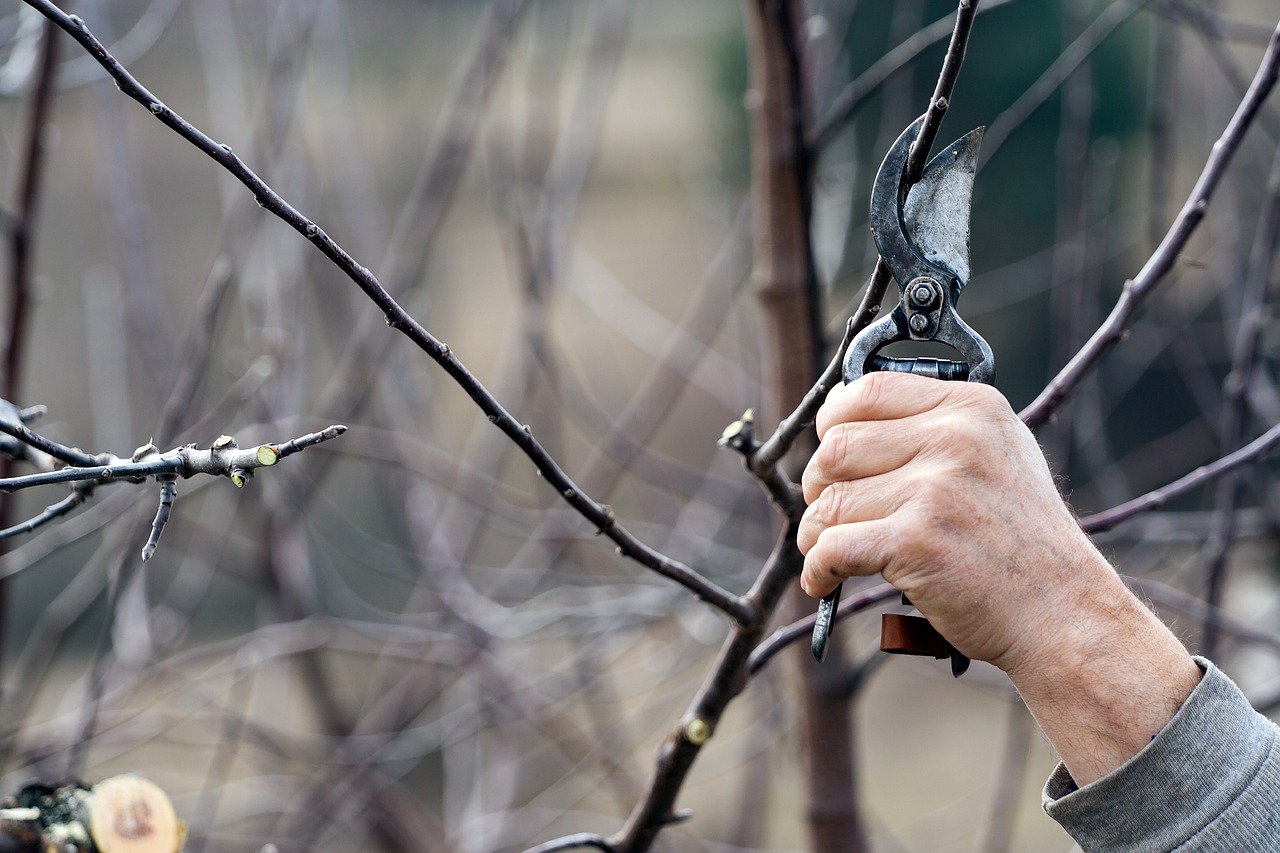
The Science of Cloning
Cloning is a fascinating and complex process that has captured the imagination of scientists and the public alike. At its core, cloning involves creating a genetically identical copy of an organism. This can be achieved through various techniques, the most famous of which is somatic cell nuclear transfer (SCNT). In SCNT, the nucleus of a somatic cell (a non-reproductive cell) is transferred into an egg cell from which the nucleus has been removed. This egg cell then begins to divide and develop into an embryo, which can be implanted into a surrogate mother.
The biological principles that underpin cloning are rooted in our understanding of genetics and cell biology. Every organism has DNA, which carries the genetic instructions for development and functioning. Cloning exploits this by taking the DNA from a donor organism and using it to create a new individual. This process not only raises questions about identity and individuality but also presents a profound opportunity for conservation efforts.
One of the most exciting aspects of cloning is its potential application in preserving endangered species. Imagine being able to bring back a species that has been lost to extinction simply by replicating its DNA! However, the road to successful cloning is fraught with challenges. Cloning is not just about copying DNA; it involves complex interactions between genes and the environment, and many cloned animals have faced health issues or abnormalities.
To better understand the cloning process, let’s break it down into a few key steps:
- Cell Selection: Identifying and obtaining the somatic cell from the organism to be cloned.
- Nuclear Transfer: Removing the nucleus from an egg cell and inserting the nucleus from the somatic cell.
- Activation: Stimulating the egg cell to begin dividing and developing into an embryo.
- Implantation: Transferring the embryo into a surrogate mother for gestation.
Despite its potential, cloning remains a controversial subject. Ethical considerations come into play, particularly regarding animal welfare and the implications of creating life in a laboratory setting. Scientists must navigate these moral dilemmas while striving to harness the power of cloning for the greater good of biodiversity. As we delve deeper into the science of cloning, it becomes clear that while the technology offers remarkable possibilities, it also demands a careful and responsible approach to ensure that we are not only preserving life but also respecting it.
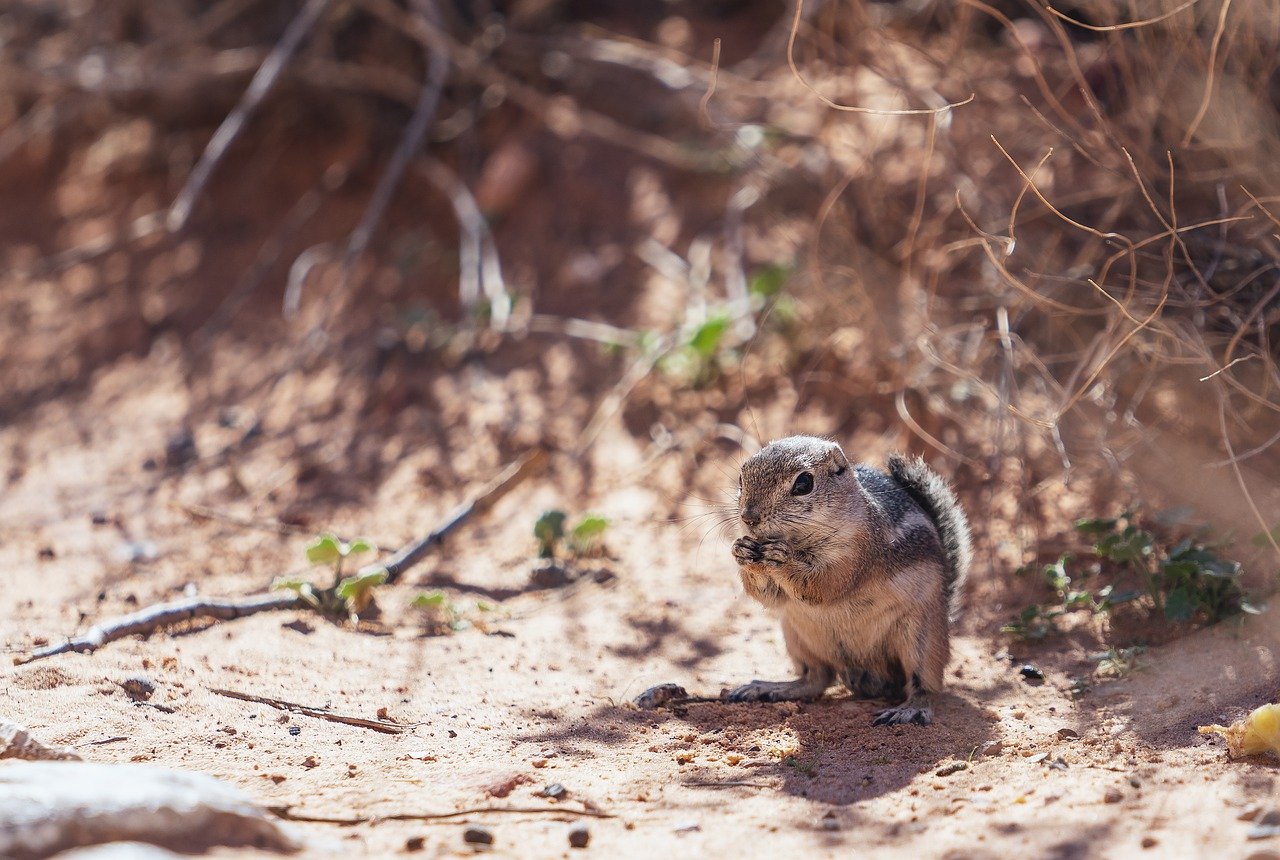
Cloning Success Stories
When we think about cloning, it’s easy to picture science fiction movies filled with dramatic plots and ethical dilemmas. However, in the real world, cloning has made significant strides, particularly in the realm of conservation. There are several noteworthy success stories that highlight how cloning has been utilized to help endangered species, and these stories are not just about bringing back the past; they are about paving the way for a sustainable future.
One of the most famous examples of cloning success is the case of the Przewalski's horse. Once declared extinct in the wild, these horses were saved through a combination of traditional breeding and cloning techniques. In a groundbreaking project, scientists used DNA from preserved specimens to create viable embryos, which were then implanted into surrogate mares. This innovative approach resulted in the birth of several healthy foals, increasing the genetic diversity of the remaining population and providing hope for the species' long-term survival.
Another compelling case is that of the black-footed ferret, a species that faced near extinction due to habitat loss and disease. In a remarkable effort, scientists successfully cloned a ferret named Elizabeth Ann from the frozen cells of a ferret that died in the 1980s. Elizabeth Ann represents a significant leap in cloning technology, as she is the first cloned endangered species in North America. Her birth is not just a triumph of science; it symbolizes a beacon of hope for the black-footed ferret population, which is now being bolstered through both cloning and traditional breeding programs.
These stories demonstrate that cloning is not merely a scientific experiment but a vital tool in the fight against extinction. The success of these initiatives has led to increased funding and interest in cloning as a conservation strategy. However, it’s essential to understand that cloning is just one piece of a much larger puzzle. The challenges of habitat destruction and climate change still loom large, and while cloning can provide a temporary boost to endangered populations, it cannot replace the need for comprehensive conservation efforts.
To further illustrate the impact of cloning on conservation, consider the following table summarizing some key cloning success stories:
| Species | Cloning Achievement | Year |
|---|---|---|
| Przewalski's Horse | Cloned embryos leading to healthy foals | 2001 |
| Black-Footed Ferret | Birth of Elizabeth Ann, the first cloned endangered species in North America | 2020 |
| Bucardo (Pyrenean Ibex) | Cloned from preserved DNA, though the clone died shortly after birth | 2003 |
In conclusion, while cloning may seem like a controversial and complex topic, the success stories emerging from the field highlight its potential as a powerful conservation tool. With continued advancements in technology and a commitment to ethical practices, cloning could help restore not just individual species but entire ecosystems. However, it’s crucial to remember that cloning should complement, not replace, traditional conservation methods. The road ahead is filled with challenges, but with each success story, we move one step closer to a world where endangered species can thrive once again.
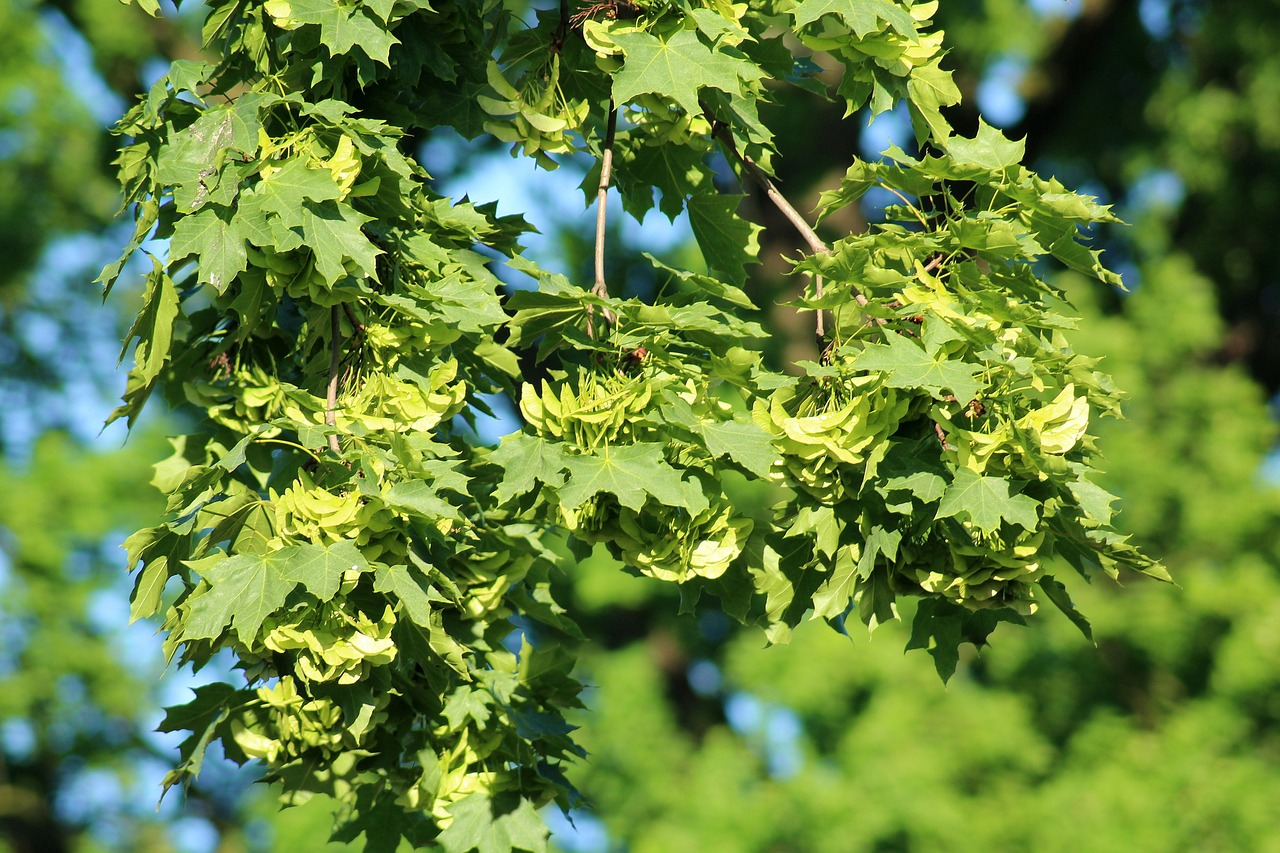
The Case of Dolly the Sheep
Dolly the Sheep, born on July 5, 1996, at the Roslin Institute in Scotland, is perhaps the most famous clone in history. She was the first mammal to be cloned from an adult somatic cell, a groundbreaking achievement that sent ripples through the scientific community and beyond. Imagine the excitement! It was like discovering a new planet, but instead, we were unearthing the secrets of life itself. The technique used to create Dolly was called somatic cell nuclear transfer (SCNT), which involved taking the nucleus from a somatic cell of an adult sheep and transferring it into an egg cell from which the nucleus had been removed. This fusion sparked a series of cellular events that led to the development of a new organism—Dolly.
But why does Dolly's story matter in the context of conservation? Well, her very existence opened the floodgates to discussions about the possibilities of cloning endangered species. It was like flipping a switch that illuminated a dark room filled with uncertainty regarding biodiversity loss. Scientists began to ponder: could cloning be the key to reviving species on the brink of extinction? The potential was tantalizing, yet it also came with a hefty dose of skepticism and ethical dilemmas.
As we look back at Dolly's life, it's essential to recognize the impact she had on both science and conservation efforts. Her successful cloning demonstrated that it was possible to create a living being from a single cell, which was previously thought to be an impossible feat. This breakthrough led to various cloning projects aimed at preserving endangered species. However, the journey has not been without its challenges. Dolly lived a relatively short life, passing away at just six years old due to complications from a progressive lung disease, which raised questions about the long-term viability of cloned animals.
Moreover, Dolly's case taught us several important lessons. For instance, cloning does not simply replace the need for natural habitats or address the root causes of species decline, such as habitat destruction, poaching, and climate change. Instead, it highlighted the necessity of a multifaceted approach to conservation—one that combines cloning technology with traditional conservation methods. In essence, cloning might be a tool in the conservation toolbox, but it should never be the only tool.
In summary, Dolly the Sheep serves as a powerful symbol of what cloning can achieve and the ethical and practical challenges that accompany such advancements. Her legacy continues to inspire scientists and conservationists alike, urging them to explore innovative solutions while remaining grounded in the realities of biodiversity preservation. As we ponder the future of cloning in conservation, we must remember that Dolly's story is not just about science; it's a call to action for all of us to protect our planet's incredible diversity.
- What is Dolly the Sheep known for? - Dolly is known for being the first mammal cloned from an adult somatic cell, marking a significant milestone in cloning technology.
- How was Dolly created? - She was created using somatic cell nuclear transfer (SCNT), where the nucleus of an adult sheep's cell was implanted into an egg cell.
- What impact did Dolly have on conservation? - Dolly's cloning sparked discussions about using cloning as a potential tool for preserving endangered species.
- What are the ethical concerns surrounding cloning? - Concerns include animal welfare, the implications of 'playing God,' and the responsibilities of scientists in cloning practices.

Impact on Conservation Efforts
The cloning of Dolly the Sheep not only made headlines but also sparked a revolution in the realm of conservation. With her birth in 1996, the scientific community was awakened to the potential of cloning as a tool to combat the alarming rates of species extinction. Imagine the possibilities: could we bring back species that have already vanished or bolster the dwindling populations of endangered animals? The implications were profound, and the ripple effects of Dolly's cloning have been felt across various conservation strategies.
One of the most significant impacts of Dolly's success is the shift in perspective regarding genetic diversity and population recovery. Cloning offers a way to rapidly increase the numbers of a species, which can be crucial in preventing extinction. For instance, in the case of the California condor, cloning techniques have been explored to enhance its genetic diversity, ensuring that these majestic birds have a fighting chance at survival. The ability to replicate individuals with desirable traits can help in creating a more resilient population, better equipped to face environmental challenges.
Moreover, cloning can serve as a temporary solution while addressing the more systemic issues that threaten wildlife, such as habitat destruction and climate change. While cloning cannot replace natural habitats or restore ecosystems, it can provide a critical buffer, buying time for conservationists to implement long-term strategies. This dual approach—using cloning alongside traditional conservation methods—could be the key to preserving our planet's biodiversity.
However, the impact of cloning on conservation efforts is not without its challenges. The scientific community must tread carefully, ensuring that cloning initiatives are undertaken with a thorough understanding of ecological dynamics. For example, introducing cloned individuals into the wild must be done with caution to avoid disrupting existing ecosystems. An ethical framework is essential to guide these efforts, ensuring that the focus remains on the well-being of the species and their habitats.
In summary, the impact of Dolly the Sheep's cloning on conservation efforts is significant and multifaceted. It has opened new avenues for genetic management and species recovery, while also highlighting the need for a balanced approach that respects the complexities of nature. As we continue to explore the potential of cloning, we must also remain vigilant and responsible stewards of the environment, ensuring that our interventions serve to enhance, rather than hinder, the intricate web of life on Earth.
- What is cloning? Cloning is the process of creating a genetically identical copy of an organism. This can be done through various techniques, including somatic cell nuclear transfer.
- How does cloning help endangered species? Cloning can help increase the population of endangered species quickly and enhance genetic diversity, which is crucial for the survival of small populations.
- Are there ethical concerns regarding cloning? Yes, cloning raises several ethical issues, including animal welfare concerns and the potential consequences of manipulating nature.
- Can cloning bring back extinct species? While cloning has the potential to revive certain species, it is not a guaranteed solution and does not address the underlying causes of extinction.

Lessons from Dolly's Cloning
The cloning of Dolly the Sheep in 1996 was not just a scientific breakthrough; it was a profound moment that reverberated through the fields of biology, ethics, and conservation. Dolly's creation using somatic cell nuclear transfer (SCNT) opened doors to a myriad of possibilities, but it also cast a spotlight on the complexities and challenges of cloning. One of the most significant lessons learned from Dolly's cloning is the importance of understanding genetic diversity. While cloning can produce genetically identical organisms, it does not enhance the genetic variation necessary for a resilient population. In essence, cloning can replicate a species, but it cannot replace the rich tapestry of genetic diversity that nature provides.
Moreover, Dolly's cloning highlighted the **ethical dilemmas** that accompany such technological advancements. Questions arose about the welfare of cloned animals, as Dolly herself suffered from health issues that were later attributed to her being a clone. This brings us to another crucial lesson: the need for stringent ethical guidelines and oversight in cloning practices. As scientists venture into the realm of cloning endangered species, it is imperative that they prioritize animal welfare and consider the long-term implications of their work.
Additionally, Dolly's story serves as a reminder of the **importance of public engagement** and transparency in scientific endeavors. The initial excitement surrounding her cloning led to a public fascination with the potential of biotechnology, but it also sparked fears and misconceptions about cloning. Educating the public about the science behind cloning, its potential benefits, and its limitations can foster a more informed dialogue about its role in conservation.
Lastly, the cloning of Dolly has prompted researchers to explore more sustainable and holistic approaches to conservation. While cloning can be a tool in the conservation toolbox, it should not be viewed as a standalone solution. Addressing the root causes of species decline—such as habitat loss, climate change, and poaching—remains essential. Cloning can complement traditional conservation efforts, but it cannot replace them.
In summary, the lessons from Dolly's cloning are multifaceted and serve as a guide for future cloning initiatives aimed at preserving endangered species. By understanding the implications of genetic diversity, prioritizing ethical considerations, engaging with the public, and adopting a comprehensive conservation strategy, scientists can navigate the complex landscape of cloning with greater responsibility and foresight.
- What is cloning, and how does it work?
Cloning is a scientific process that creates a genetically identical copy of an organism. The most common method is somatic cell nuclear transfer (SCNT), where the nucleus of a somatic cell is transferred into an egg cell that has had its nucleus removed. - What are the ethical concerns related to cloning?
Ethical concerns include animal welfare, the potential for genetic defects, and the moral implications of playing God. It raises questions about the rights of cloned animals and the responsibilities of scientists. - Can cloning help save endangered species?
Cloning has the potential to revive endangered species by increasing their population numbers. However, it is not a substitute for addressing the environmental factors that lead to species decline. - What are the limitations of cloning in conservation?
Cloning cannot address habitat loss, genetic defects may arise, and cloning is often expensive and resource-intensive. It is crucial to combine cloning efforts with traditional conservation methods.

Ethical Considerations
When we dive into the world of cloning, it’s impossible to ignore the ethical dilemmas that swirl around this controversial technology. Cloning isn't just a scientific endeavor; it raises profound questions about animal welfare, the essence of life, and our role as stewards of the planet. Are we playing God by attempting to recreate life, or are we simply leveraging our understanding of biology to fix what we've broken? These questions aren't just philosophical musings; they have real implications for how we approach cloning as a tool for conservation.
One of the primary concerns revolves around animal welfare. Cloning processes often involve significant risks to the animals involved. For instance, many cloned animals suffer from health issues or deformities, leading to a shorter lifespan and a lower quality of life. The process itself can be invasive and distressing. As we push the boundaries of science, we must ask ourselves: at what cost are we willing to pursue these advancements? The moral responsibility lies heavily on the shoulders of scientists and conservationists alike.
Furthermore, there’s the question of genetic diversity. While cloning can help revive endangered species, it often results in a lack of genetic variation, which is crucial for the long-term survival and adaptability of a population. Imagine trying to survive in a rapidly changing environment with a family tree that’s essentially a clone of itself! This genetic bottleneck can lead to unforeseen consequences, making species more susceptible to diseases and environmental changes.
Then we have the broader implications of playing God. Cloning raises the question of whether we should intervene in natural processes. Are we overstepping our bounds by trying to manipulate life at such a fundamental level? While some may argue that it’s our responsibility to save species from extinction, others contend that we should let nature take its course. This tension between intervention and natural selection is at the heart of the ethical debate surrounding cloning.
As we navigate these complex waters, it’s essential to engage in open discussions about the responsibilities that come with cloning technology. Scientists must work alongside ethicists, conservationists, and the public to ensure that any cloning initiatives are conducted with the utmost care and consideration for the beings involved. Transparency in research, adherence to strict ethical guidelines, and ongoing public dialogue will be crucial in addressing these ethical concerns.
In conclusion, while cloning presents exciting possibilities for conservation, it also demands a careful examination of the ethical implications. Balancing the potential benefits with the moral responsibilities we hold is a challenge that requires thoughtful engagement and a commitment to the welfare of all living beings.
- What are the main ethical concerns regarding cloning? The primary concerns include animal welfare, genetic diversity, and the moral implications of manipulating life.
- How does cloning affect animal welfare? Cloned animals often face health issues and shorter lifespans, raising questions about the ethics of their creation.
- Can cloning help restore endangered species? Yes, cloning can potentially revive endangered species, but it comes with risks such as reduced genetic diversity.
- What role do scientists play in addressing ethical concerns? Scientists must engage in transparent research and collaborate with ethicists and conservationists to navigate the moral complexities of cloning.
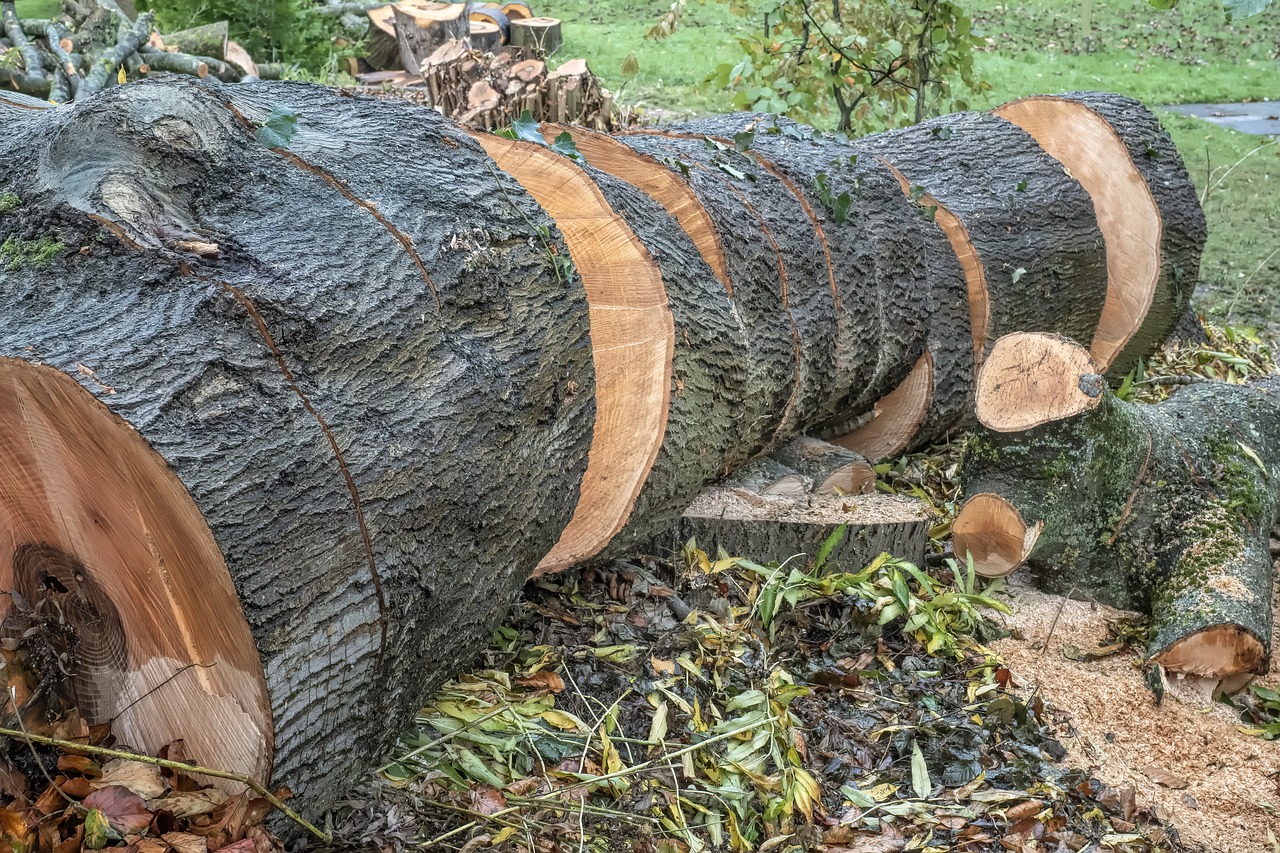
Cloning vs. Natural Conservation
When it comes to preserving our planet's biodiversity, the debate between cloning and traditional conservation methods is heating up. On one hand, cloning offers a futuristic approach that could potentially save species on the brink of extinction. On the other hand, natural conservation has been the tried-and-true method for decades, relying on habitat preservation and sustainable practices. But which is more effective in the long run? Let's dive into this intriguing comparison.
Cloning, as a conservation tool, is often viewed as a double-edged sword. It presents innovative possibilities, such as the rapid recovery of endangered populations. For instance, scientists can take genetic material from a dwindling species and create clones, effectively increasing their numbers in a relatively short time frame. This is particularly useful for species that have very few individuals left in the wild. However, cloning does not address the root causes of extinction, such as habitat loss or climate change. In essence, while cloning can boost numbers, it cannot replace the natural ecosystems that these species depend on.
In contrast, natural conservation focuses on restoring and protecting habitats, which is vital for sustaining wildlife populations over the long haul. By implementing conservation strategies like establishing protected areas or restoring degraded habitats, we can create environments where species can thrive naturally. This approach not only benefits the targeted species but also enhances the overall health of the ecosystem. A thriving ecosystem can support a variety of species, thus promoting biodiversity.
To further illustrate the differences between cloning and natural conservation, consider the following table:
| Aspect | Cloning | Natural Conservation |
|---|---|---|
| Speed of Results | Fast recovery of numbers | Slow, gradual improvement |
| Addressing Root Causes | No | Yes |
| Genetic Diversity | Potentially limited | Promotes diversity |
| Long-term Sustainability | Uncertain | High |
As we can see, while cloning can provide quick fixes, it lacks the depth and sustainability that natural conservation offers. Moreover, relying solely on cloning could lead to a false sense of security. Imagine a firefighter who only puts out the flames without addressing the underlying cause of the fire—eventually, the blaze will return. Similarly, if we focus only on cloning without tackling habitat destruction, we might find ourselves in a cycle of endless recovery efforts.
Another important point to consider is the ethical implications of cloning. As we manipulate the genetic fabric of life, we must ask ourselves: Are we playing God? What responsibilities do we bear in ensuring that our actions do not lead to unforeseen consequences? Natural conservation, while not without its own challenges, often aligns more closely with ethical considerations, as it seeks to work in harmony with nature rather than attempting to control it.
Ultimately, the best approach may not be a strict dichotomy between cloning and natural conservation, but rather a synergistic strategy that incorporates both methods. For instance, cloning could be used as a stopgap measure for critically endangered species while we simultaneously work on restoring their habitats. This dual approach could provide a more holistic solution to the pressing issue of extinction.
- Can cloning really save endangered species? While cloning can increase numbers, it does not address habitat loss or other threats.
- What are the main ethical concerns regarding cloning? Ethical dilemmas include animal welfare issues and the implications of genetic manipulation.
- Is natural conservation enough to prevent extinction? Natural conservation is crucial but often needs to be complemented by innovative solutions like cloning.

Advantages of Cloning
Cloning has emerged as a beacon of hope in the fight against species extinction, offering several distinct advantages that traditional conservation methods may struggle to match. One of the most significant benefits is the potential for rapid population recovery. Imagine a world where an endangered species, on the brink of extinction, can be brought back to life through cloning. This technology allows for the creation of genetically identical individuals, which can help bolster dwindling populations in a relatively short period. In essence, cloning can act as a lifeline for species that are critically endangered, giving them a second chance at survival.
Furthermore, cloning can enhance genetic diversity within a population. Genetic diversity is crucial for the resilience of a species, allowing it to adapt to changing environments and resist diseases. By carefully selecting genetic material from various individuals, scientists can create clones that contribute to a more robust gene pool. This is particularly important for species that have already suffered from inbreeding due to their small population sizes. The ability to introduce new genetic variations can be a game-changer in conservation efforts.
Additionally, cloning can serve as a valuable tool for research. It allows scientists to study the biology and genetics of endangered species in ways that were previously unattainable. For instance, by cloning a species, researchers can examine its developmental processes and understand the genetic factors that contribute to its survival. This knowledge can inform conservation strategies and help address the underlying issues leading to a species' decline. Cloning, therefore, not only aids in the immediate recovery of populations but also enhances our understanding of biodiversity and ecosystem dynamics.
However, while the advantages of cloning are compelling, they must be weighed against the challenges and limitations that accompany this technology. It's essential to consider how cloning fits into the broader conservation landscape. For example, while cloning can create individuals, it cannot address the root causes of extinction, such as habitat loss and climate change. Thus, cloning should be viewed as a complement to, rather than a replacement for, traditional conservation efforts.
In conclusion, the advantages of cloning in conservation are significant and multifaceted. From rapid population recovery to enhanced genetic diversity and valuable research opportunities, cloning has the potential to make a profound impact on the survival of endangered species. As we continue to explore and refine this technology, it is crucial to remain mindful of its limitations and to integrate it into a comprehensive conservation strategy that addresses the myriad challenges facing our planet's biodiversity.
- What is cloning? Cloning is the process of creating a genetically identical copy of an organism. This can be done through various techniques, including somatic cell nuclear transfer.
- How can cloning help endangered species? Cloning can help by rapidly increasing population numbers and enhancing genetic diversity, providing endangered species with a better chance of survival.
- Are there ethical concerns surrounding cloning? Yes, cloning raises several ethical dilemmas, including animal welfare issues and the potential consequences of "playing God" with nature.
- Can cloning solve all conservation problems? No, while cloning offers significant benefits, it cannot address habitat destruction, climate change, and other critical threats to biodiversity.
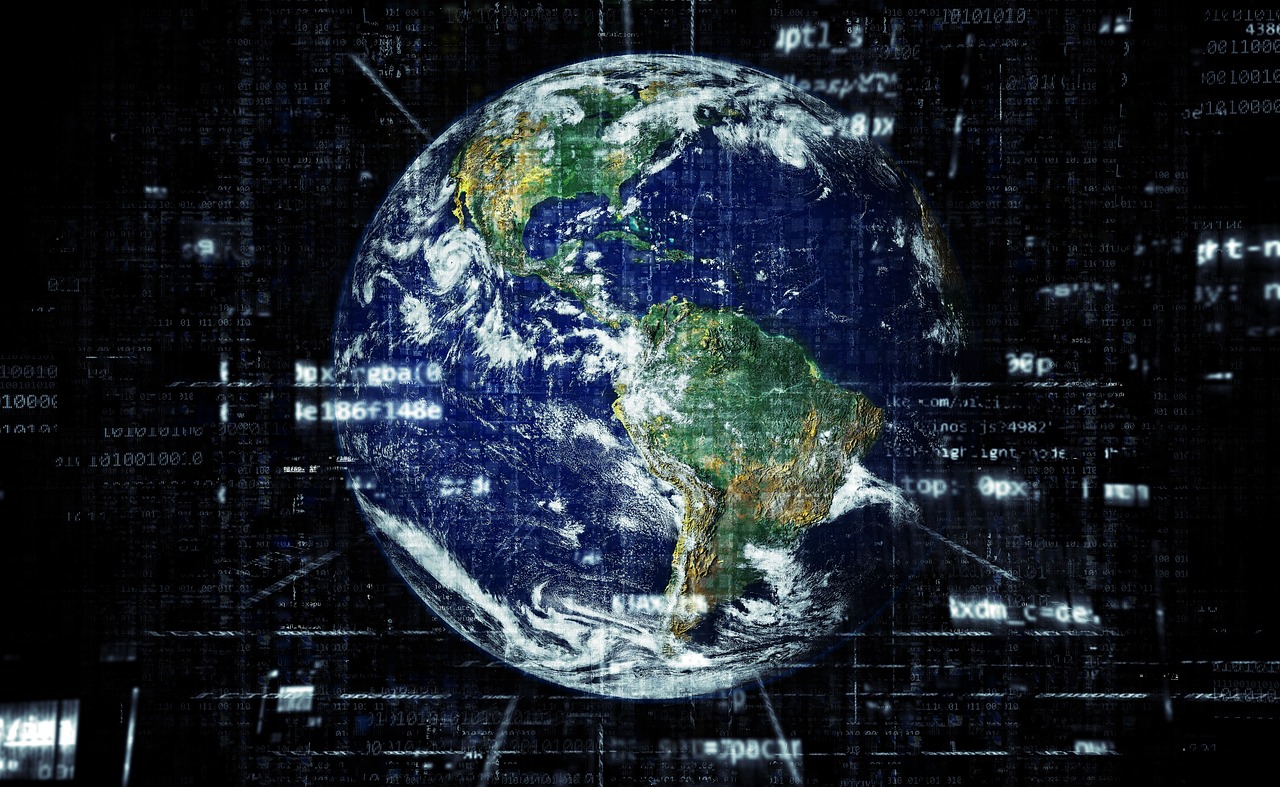
Limitations of Cloning
While cloning presents an intriguing solution to the problem of species extinction, it is not without its limitations. First and foremost, one must consider the genetic defects that often accompany cloned organisms. Studies have shown that cloned animals can suffer from a range of health issues, including organ failure, immune deficiencies, and premature aging. For instance, many of the cloned sheep produced after Dolly experienced significant health problems, raising questions about the viability of cloned species in the wild.
Additionally, the cost of cloning is another substantial barrier. Cloning is an expensive process, requiring advanced technology and specialized knowledge. The financial investment needed for cloning projects can be astronomical, often diverting funds from other crucial conservation efforts. Imagine spending millions on cloning a single species while habitats continue to be destroyed at alarming rates. It raises the question: is cloning the best use of our resources?
Furthermore, cloning does not address the root causes of extinction. Even if we successfully clone an endangered species, we still face the pressing issue of habitat loss, climate change, and poaching. Cloning can help boost numbers temporarily, but without a sustainable environment, these species may still face extinction. It’s like trying to fill a bucket with holes; no matter how much water you pour in, it will never stay full unless you fix the holes first.
Another significant limitation is the lack of genetic diversity that cloning can create. Cloned organisms are genetically identical to their donors, which can lead to a lack of variation within the population. This homogeneity can make cloned species more susceptible to diseases and environmental changes. In nature, genetic diversity is crucial for survival, acting as a buffer against changing conditions. If a cloned population faces a new disease, for example, they may all be wiped out due to their identical genetic makeup.
In summary, while cloning offers a fascinating glimpse into the future of conservation, it is essential to recognize its limitations. The challenges of genetic defects, high costs, inability to address root causes, and lack of genetic diversity all pose significant hurdles. As we continue to explore cloning as a potential solution to extinction, we must also prioritize traditional conservation methods and habitat protection to ensure a holistic approach to preserving our planet's biodiversity.
- What are the main ethical concerns surrounding cloning? Many people worry about the treatment of cloned animals, the implications of "playing God," and the potential consequences of manipulating nature.
- Can cloning bring back extinct species? While theoretically possible, cloning extinct species is fraught with challenges, including the lack of viable DNA and suitable surrogate species.
- How does cloning compare to traditional conservation methods? Cloning can be a rapid way to increase population numbers, but it doesn't address habitat loss or other environmental threats, which are crucial for long-term survival.
Frequently Asked Questions
- What is cloning and how does it work?
Cloning is a scientific process that creates a genetically identical copy of an organism. It involves techniques such as somatic cell nuclear transfer, where the nucleus from a donor cell is inserted into an egg cell that has had its nucleus removed. This process allows for the development of an embryo that shares the same genetic material as the donor, effectively creating a clone.
- What are some successful examples of cloning?
One of the most famous examples of cloning is Dolly the Sheep, who was the first mammal to be cloned from an adult somatic cell. Other successful cloning efforts include the cloning of endangered species like the Przewalski's horse and the black-footed ferret, which have helped to boost their populations and maintain genetic diversity.
- How does cloning impact conservation efforts?
Cloning can significantly impact conservation by providing a means to revive endangered species and enhance genetic diversity. It offers a potential solution to rapidly increase populations of species that are on the brink of extinction, thus aiding in the restoration of biodiversity in ecosystems.
- What are the ethical concerns surrounding cloning?
Cloning raises several ethical issues, including concerns about animal welfare, the potential for suffering in cloned animals, and the moral implications of 'playing God.' Additionally, there are questions about the responsibilities of scientists in ensuring that cloning is conducted ethically and with respect for the animals involved.
- How does cloning compare to natural conservation methods?
Cloning is often seen as a complementary tool to traditional conservation methods rather than a replacement. While cloning can help recover populations quickly, it does not address underlying issues like habitat loss and environmental degradation, which are critical for long-term species survival. A balanced approach that incorporates both cloning and natural conservation strategies is essential.
- What are the limitations of cloning?
Despite its potential, cloning has limitations, including high costs, the risk of genetic defects, and the inability to solve habitat-related issues. Cloned animals may also face health problems, and the technology is still in its infancy, making it less reliable compared to established conservation methods.



















